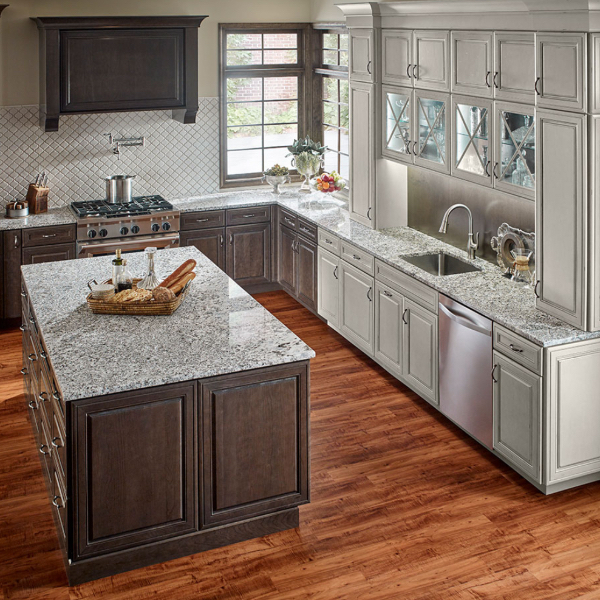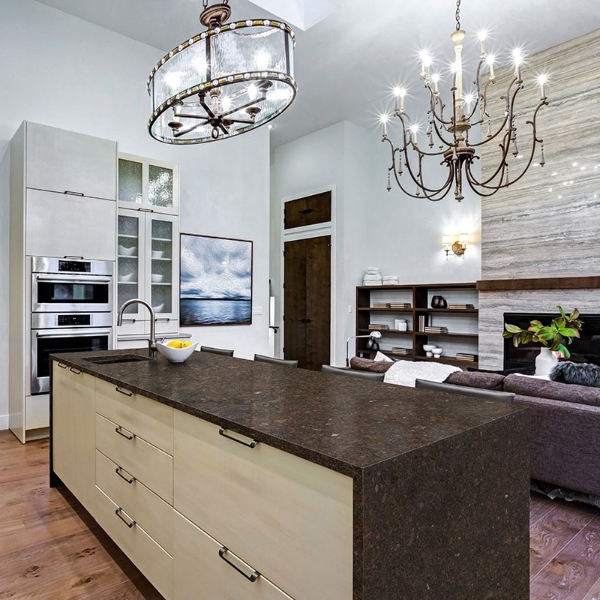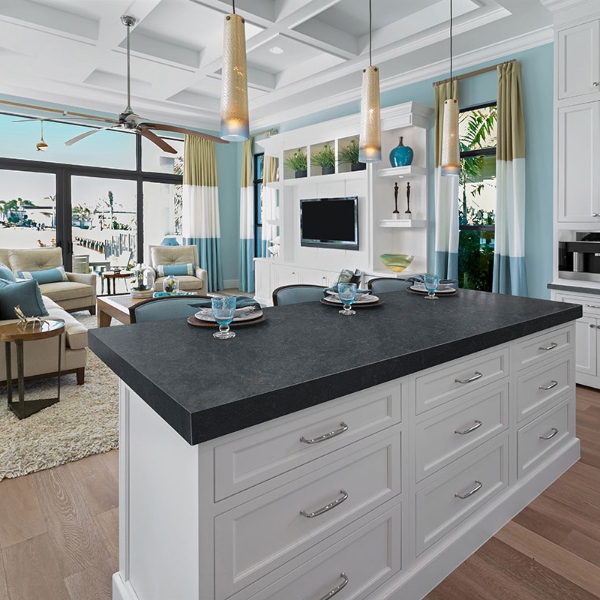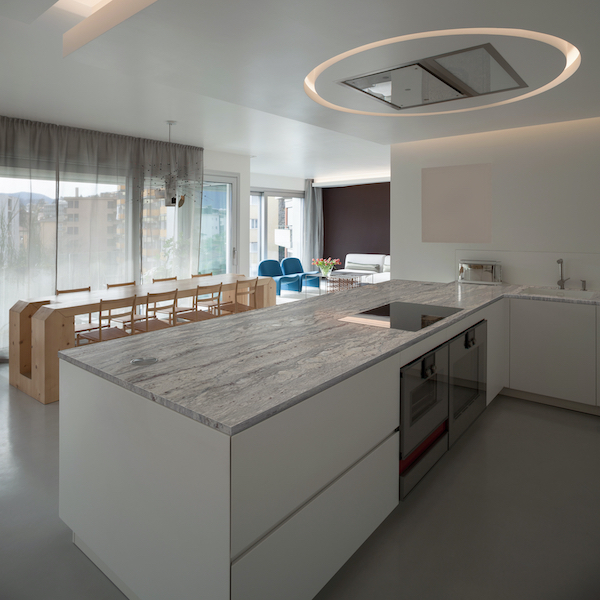Understanding Granite Countertops And How To Choose The Best One
January 14, 2022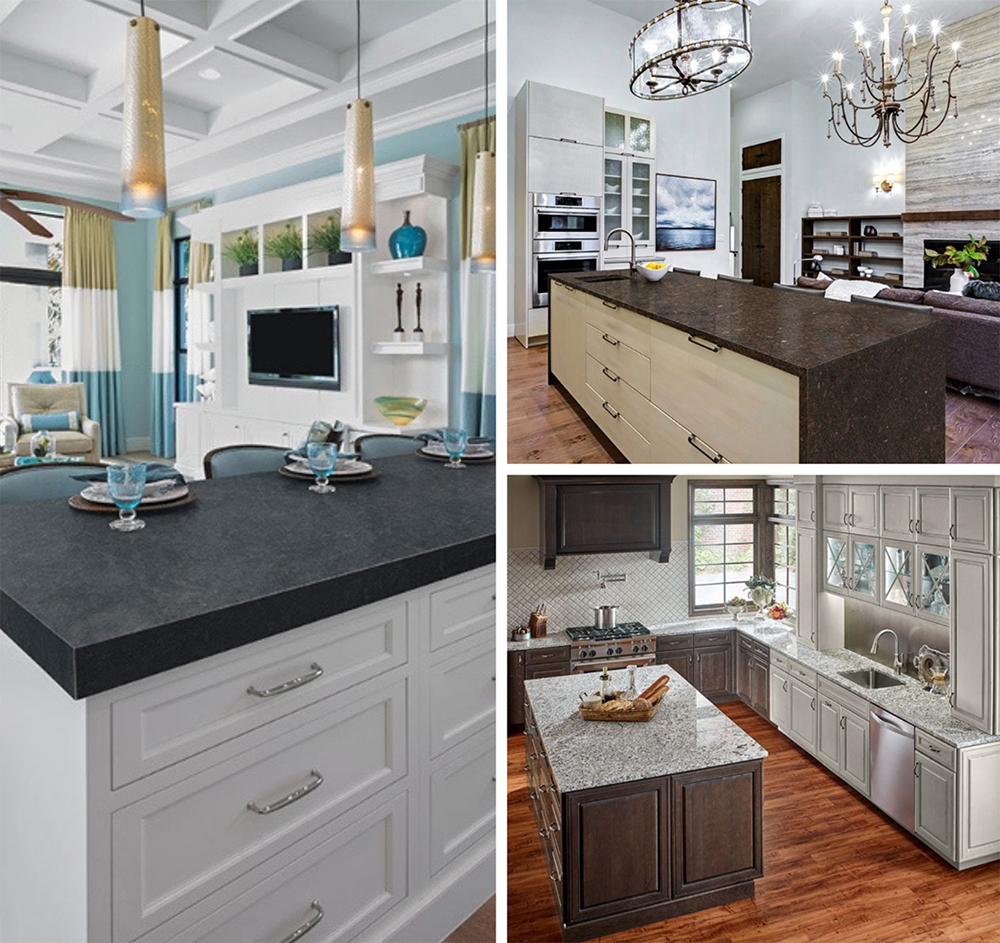
For decades, granite countertops have remained one of the most sought-after premium surfaces for homeowners looking to upgrade kitchens, bathrooms, and even outdoor areas. This comes as no surprise as granite makes a big home improvement statement with its stunning colors, unique veining, flecks, and other striking patterns.
In addition to this unparalleled beauty, granite countertops are the practical choice for many homeowners as they offer resistance to heat damage, chipping, staining, and more. In this article, we’ll cover not only how to select the best granite countertops for your design needs but how this natural stone forms and where it gets its always on-trend eye-catching beauty.
HOW IS GRANITE FORMED AND WHAT IS IT MADE OF?
Granite is an intrusive igneous rock that is created when, under high pressure, molten lava—magma—flows underground, eventually crystallizing when the magma slowly cools. This slow cooling helps create the singular mineral crystals apparent in granite. Over time different mineral types form, altering the final extracted granite. As a result, how long the molten rocks cool determines the individual grain sizes.
Quartz, micas, feldspar, and other trace minerals make up what we call granite. Granite gets its hardness from quartz. If there’s no quartz within the rock, you’re not dealing with authentic granite. In fact, to be considered granite, the rock needs to contain no less than 20% quartz. While not all granite stones contain mica minerals, most harbor at least a small quantity. It’s these flakes of mica that create granite’s sparkling reflective nature.
HOW DOES GRANITE GET ITS VIVID COLORS?
The aforementioned minerals from which this natural stone is made make up the color variations we see in different granite types. For example, if the molten rock is chock full of quartz, the result is the ever-popular black with white speckles we often see in kitchen countertops. Or, if there was a good deal of feldspar in the molten rock, the granite is more often a cool shade of off white.
If biotite, a mica mineral, is heavily present, the result is a dark brown to black granite. While these are only a few examples, you can see the importance of the minerals which create the jaw-dropping granite countertops we see in homes today.
CHOOSING THE BEST GRANITE FOR YOUR NEEDS
With hundreds of granite types to choose from, narrowing your selection down can prove challenging. You need to consider color, size, thickness, and more. Fear not because we’ve got you covered. Read on to help narrow down your decision.
Choosing COLOR
When deciding the right color for your granite countertops, it’s essential to consider the room’s lighting. Opt for a speckled or lighter color granite for darker spaces with little or no natural light. Choosing darker shades for darker rooms will result in the area appearing smaller. On the other hand, for a kitchen flooded with light, you can’t go wrong choosing black granite with white specks or streaks.
If you’re heading to a showroom to see the granite up close, it’s a good idea to bring some of the room’s other materials with you. If possible, bring along a paint or flooring sample. You can even unscrew a cabinet door to make sure it jives with the granite.
Of course, using the right camera to snap a ton of natural light photos will help. Part of the appeal of granite is that there’s a lot going on with all the veins, speckles, and background colors. For this reason, you should consider everything in the room—appliances, furniture, window treatments, etc.—when choosing a color.
If the showroom offers samples to take home, jump at the opportunity. Otherwise, take as many pictures of your final selections as possible. Back home, take these samples or photos for a test drive. Set a sheet of white paper over your existing counters and place the sample over it. It’s important to test the sample at different times of the day as the natural light of the room shifts, so keep your paper and sample in place for at least one day.
Choosing PREFABRICATED OR SLAB
When selecting the best granite countertops for your needs, another choice you’ll face is between prefabricated countertops and granite slabs. While these two options share much in common, there are indeed differences. Among the similarities is that they are both 100% crafted from authentic granite, they come in a wide variety of colors, and they each add a lot of value to your home, giving a nice boost to its resale price.
When considering the differences, there is much to explore. You’ll find a more extensive color selection with granite slabs and more options for finishes and edges. With prefabricated granite countertops, you’ll pay less, have finishes on three sides, and receive a small matching backsplash.
Some may wonder if prefabricated granite countertops are inferior to slabs. The answer is no. Where custom slabs are cut to order, prefabricated counters are mass-produced to save you money and cut to standard sizes to seamlessly fit into your standard design.
If you see a custom design in your future or a statement making center island, take the granite slab route. On the other hand, if you’re looking for a more standard design that saves you money without forgoing quality and beauty, a prefabricated countertop is the one for you.
WRAPPING it all UP
As you can see, there is a lot to consider when choosing the right granite countertops to upgrade your living space or office. You may even want to explore other countertop options with a quartz vs. granite pros and cons list. It all comes down to what is suitable for you and your overall design, but in the end, either way, you win.
As always, we are only a phone call away to walk you through the options and help you choose the right premium surfaces. Don’t hesitate to give our experts a call. We love partnering with you to make your design dreams a reality.
LEARN MORE ABOUT GRANITE COUNTERTOPS
Find the Perfect Granite Countertop with MSI’s Kitchen Design Tool
Add Sophistication to Your Kitchen with New Gray Granite Countertops
Visualize Granite Countertops and More with Our Multi-Surface Visualizer Tool
